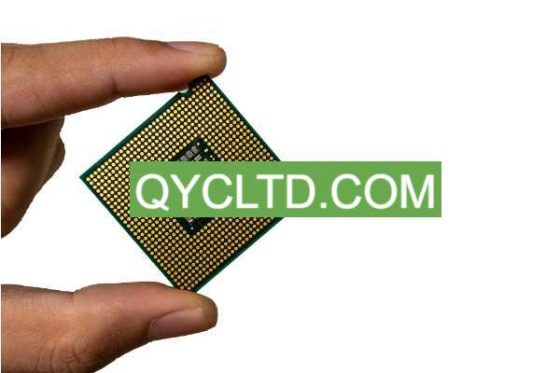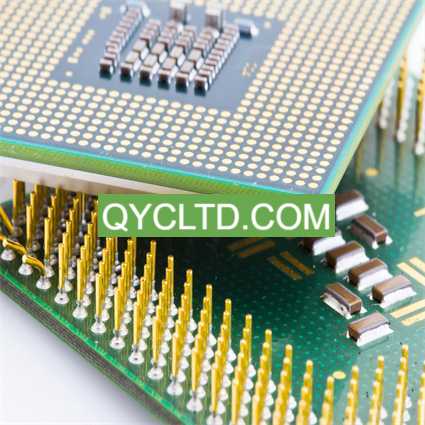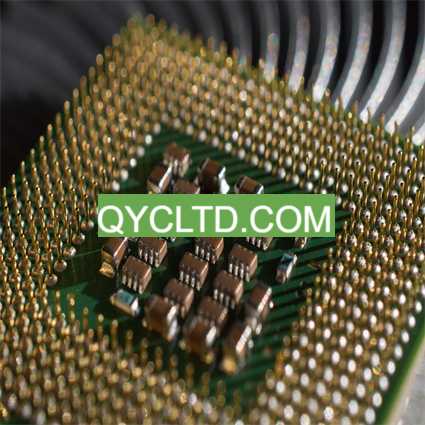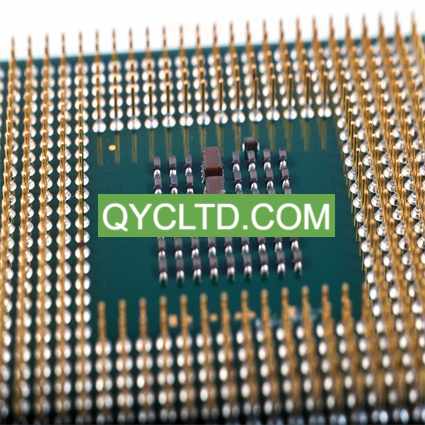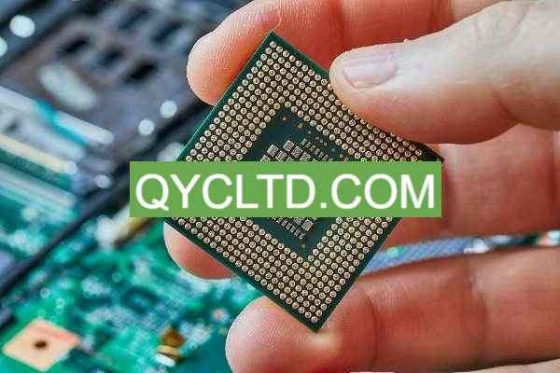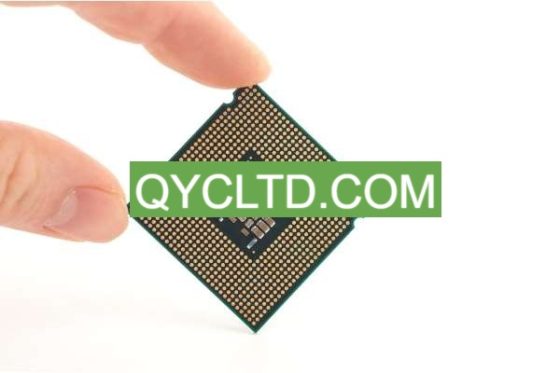What is BT/ABF/Rogers Substrate?
BT/ABF/Rogers Substrate Manufacturer.BT/ABF/Rogers Substrate Manufacturer specializes in producing high-quality substrates essential for advanced electronic applications. Utilizing BT (Bismaleimide-Triazine), ABF (Ajinomoto Build-up Film), and Rogers materials, the company ensures superior performance and reliability in printed circuit boards. Their innovative solutions cater to industries requiring precision and durability, including telecommunications, automotive, and aerospace, fostering advancements in technology and connectivity.
BT/ABF/Rogers Substrate manufacturing.High speed and high frequency material packaging substrate manufacturing. Advanced packaging substrate.
BT/ABF/Rogers substrate is a high performance printed circuit board (PCB) substrate commonly used in high frequency and microwave applications. It is composed of three main materials: BT (Bismaleimide Triazine), ABF (Ajinomoto Build-Up Film) and Rogers (Rogers).
BT is a high-performance resin with excellent thermal stability and mechanical strength, allowing the BT/ABF/Rogers substrate to operate stably in high-temperature and high-frequency environments. ABF is a special thin film material used to provide insulation and encapsulation in multi-layer PCB structures. It has good thermal conductivity and dimensional stability, allowing the circuit board to maintain good performance under different temperature conditions. Rogers is a company that specializes in the production of high-frequency, high-performance circuit board materials. Its materials are widely used in high-frequency fields such as wireless communications and radar systems.
The BT/ABF/Rogers substrate made of these three materials has excellent electrical properties, including low loss, low dielectric constant and low signal transmission delay. Donc, they are often used in applications that require high-speed data transmission and strict signal integrity requirements, such as communication equipment, satellite systems, radar systems, et du matériel médical.
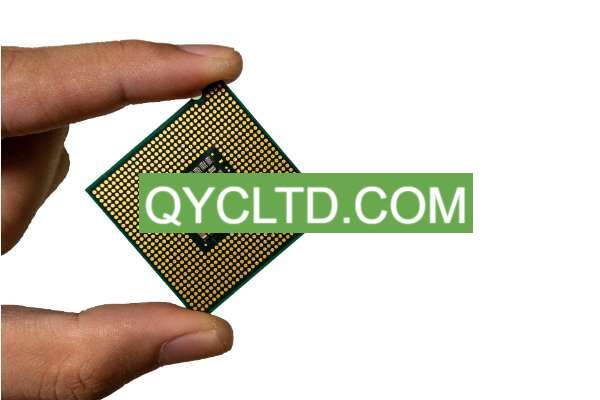
BT/ABF/Rogers Fabricant de substrats
BT/ABF/Rogers Substrate design Reference Guide
This guide is designed to help engineers and designers understand how to effectively use these substrates to design high-performance electronic products. The guide includes the following:
Substrate overview: Introducing the characteristics, advantages and application scope of BT, ABF and Rogers substrates, as well as comparison with traditional FR-4 substrates.
Design Principles: Details the design principles to consider when using these substrates, including points such as interlayer spacing, impedance control, Intégrité du signal, and EMI/RFI suppression.
Process and manufacturing: Introduces the substrate manufacturing process, including key points in material selection, lamination process, printed circuit production and surface treatment.
Application Cases: Real-life case studies demonstrate how these substrates are used in different electronic products and illustrate challenges and solutions during the design process.
Future development trends: Looking forward to the future development trends of BT, ABF and Rogers substrates, including the application of new materials, process improvements and innovation in design methods.
This guide is intended for electronic engineers, circuit designers and substrate manufacturers to help them better understand and apply BT, ABF and Rogers substrates to improve the performance and reliability of electronic products.
What material is used in BT/ABF/Rogers Substrate?
BT/ABF/Rogers substrates usually use high-performance composite materials. This material is usually composed of fiberglass, polyamide resin and polytetrafluoroethylene (PTFE). Fiberglass provides the mechanical strength and stability of the substrate, allowing it to withstand high-frequency operation and complex electronic component layouts. Polyamide resins are often used as adhesives for substrates, enhancing the material’s resistance to heat and chemicals. Polytetrafluoroethylene (PTFE) is a low dielectric constant material that can reduce the dielectric loss of the substrate and improve its performance in high-frequency circuits. The combination of these materials enables BT/ABF/Rogers substrates to have excellent performance in microwave and radio frequency applications, such as communication equipment, radar systems and satellite communications.
What size are BT/ABF/Rogers Substrate ?
BT/ABF/Rogers substrate is a common printed circuit board material used in the manufacture of high-frequency electronic equipment and communication systems. These substrates usually use glass fiber reinforced polyimide or polytetrafluoroethylene (PTFE) as the base material, which has excellent high frequency performance and electrical characteristics.
Common sizes of BT (Bisphenol A Blue) substrates include standard 12 inches x 18 inches (approximately 305 mm x 457 mm) and 24 inches x 18 inches (approximately 610 mm x 457 mm). ABF (polyimide film) substrates are usually provided in roll form, and their width can be customized according to specific needs, but common thicknesses are 20-125 microns. Rogers baseboard sizes can vary between series and models, with common sizes including 24″ x 18″ (approximately 610mm x 457mm) and 12″ x 18″ (approximately 305mm x 457mm).
The size and thickness selection of these substrates depends on the specific application needs and manufacturing process. They are widely used in wireless communications, radar systems, microwave equipment and other fields because they provide excellent signal transmission performance and high temperature resistance, and are suitable for complex electronic system design.
The Manufacturing Process of BT/ABF/Rogers Substrate
BT (Bismaleimide Triazine)/ABF (Aromatic Bismaleimide Resin Film)/Rogers substrate is a high-performance, high-reliability printed circuit board substrate that is widely used in aerospace, militaire, communications and other fields. Its manufacturing process includes the following steps:
Raw material preparation: Prepare raw materials containing BT resin, ABF resin and fillers. BT resin provides high temperature performance and mechanical strength, ABF resin provides excellent electrical properties, and fillers are used to adjust the performance of the substrate.
Mixing and dissolving: Mix BT resin, ABF resin and filler and dissolve in solvent to form a slurry.
Coating: Coat the slurry on the copper foil substrate to form a prepreg coating. This step is usually performed using a medical scraper or roller.
Drying: Drying the coated substrate at the appropriate temperature to remove the solvent and allow the prepreg coating to cure.
Lamination: Place the dry substrate together with another copper foil-covered substrate (if double-sided is required), and apply high temperature and high pressure through a lamination machine to bond the two substrates into one.
Curing: At high temperatures, the thermal cross-linking reaction used to cure BT resin and ABF resin occurs, allowing the substrate to obtain its final physical and chemical properties.
Surface treatment: Chemical treatment of the substrate surface to provide good soldering performance and electrical performance.
Processing: Cut the substrate into the required size and perform hole drilling and other processing techniques to meet the requirements of the circuit board design.
Final inspection: Strict appearance and performance inspection of the finished product to ensure that the quality of the substrate meets the requirements.
Through these steps, BT/ABF/Rogers substrates can achieve excellent performance and reliability, suitable for various high-end electronic applications.
The Application area of BT/ABF/Rogers Substrate
BT/ABF/Rogers is a high-frequency microwave plate that is widely used in radio frequency (RF) and microwave circuits. They have excellent dielectric properties, stable mechanical properties and excellent high-frequency characteristics, making them suitable for various high-performance communications and radar system applications.
In communication systems, BT/ABF/Rogers substrates are often used to manufacture components such as antennas, filters, couplers, and power amplifiers. Due to their low loss, low crosstalk and high reliability, they are widely used in 5G communication systems, satellite communication systems and radar systems.
De plus,, BT/ABF/Rogers substrates are also widely used in medical equipment, aerospace electronic equipment, automotive radar systems and other fields. Their stability and reliability make them ideal for many critical applications.
What are the advantages of BT/ABF/Rogers Substrate?
BT/ABF/Rogers substrates have many advantages that make them popular in the electronics industry. Tout d’abord, they have excellent high-frequency characteristics and can maintain stable signal transmission at high frequencies, making them suitable for applications such as wireless communications and radar systems that require high-frequency operation. Deuxièmement, these substrates have excellent thermal stability and chemical resistance, can maintain good performance in harsh environments, and are suitable for applications in aerospace, military and other fields. De plus,, they have low dielectric loss and high dielectric constant, which help improve the performance of circuits, and have good processability to meet the manufacturing needs of complex circuit boards. En résumé, BT/ABF/Rogers substrates have excellent performance and reliability and are suitable for the manufacturing of various high-performance electronic devices.
FQA (Frequently Asked Questions)
What is BT/ABF/Rogers Substrate?
BT (Bismaleimide Triazine), ABF (Aramid Bismaleimide Film), and Rogers Substrate are specialized materials used in electronic packaging and interconnection applications. They offer high thermal stability, excellent electrical properties, and mechanical strength.
What are the key characteristics of BT/ABF/Rogers Substrate?
BT/ABF/Rogers Substrates exhibit high glass transition temperatures, low moisture absorption, excellent dielectric properties, and good dimensional stability under various operating conditions. They are suitable for high-frequency and high-speed applications.
What are the typical applications of BT/ABF/Rogers Substrate?
These substrates are commonly used in advanced electronic devices such as RF (Radio Frequency) modules, microwave circuits, antennas, high-speed digital circuits, and automotive electronics due to their superior electrical and thermal performance.
What are the advantages of using BT/ABF/Rogers Substrate?
BT/ABF/Rogers Substrates offer advantages such as low loss tangent, controlled impedance, high thermal conductivity, compatibility with lead-free soldering processes, and reliability in harsh environments. They contribute to enhanced signal integrity and performance in electronic systems.
 Fabricant de substrats de boîtier de semi-conducteur
Fabricant de substrats de boîtier de semi-conducteur

